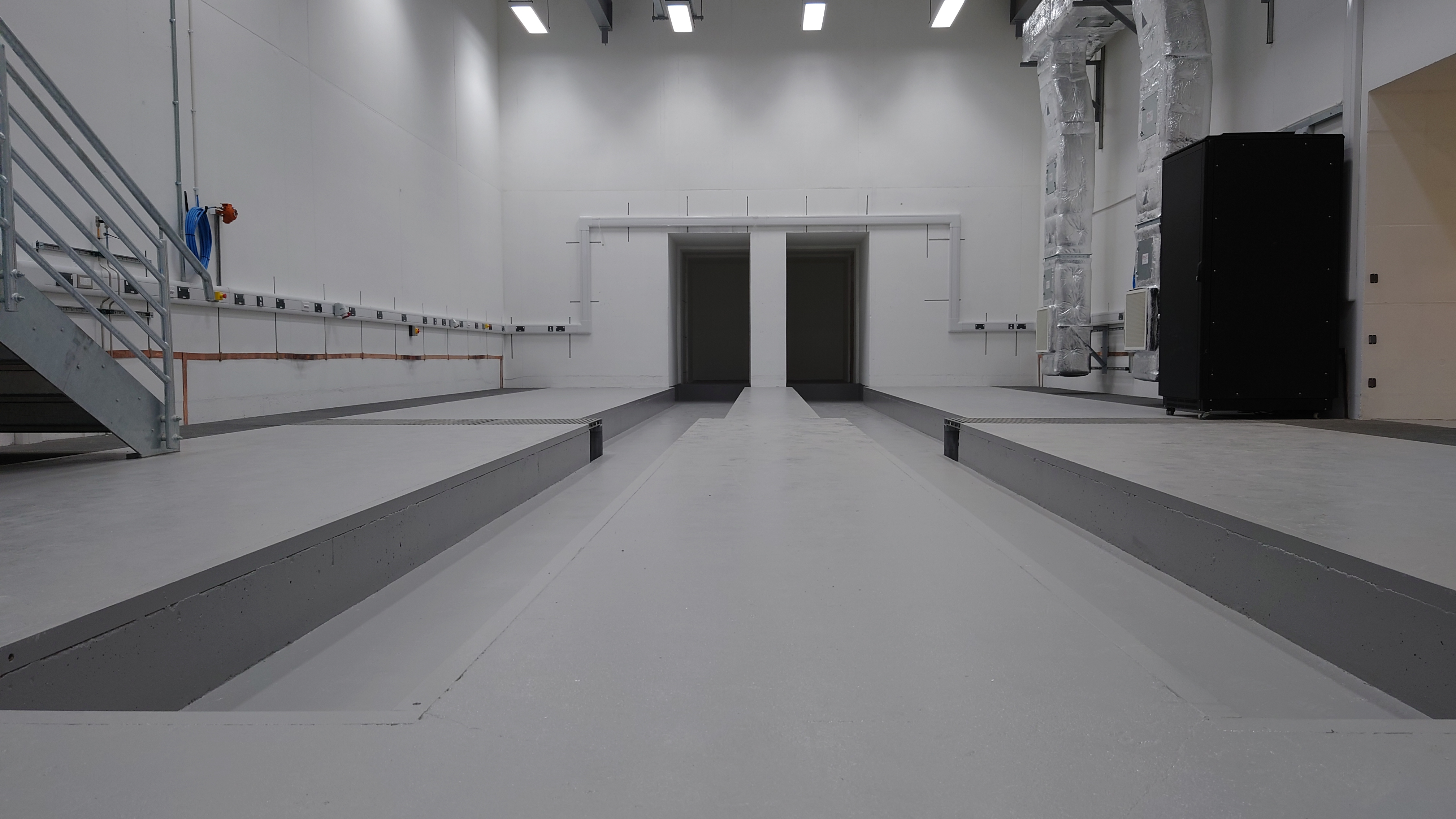The higher repetition rate compared to the Gemini laser facility will enable large-scale parameter scans and the use of automated optimisation routines to study LWFA physics, producing high quality electron beams in the multi-GeV energy range. LWFA-based radiation sources with unique properties will provide a resource for a wider community of users to perform advanced techniques, for example x-ray absorption spectroscopy with femtosecond time resolution. The enhancement in accelerator performance that will be realised with EPAC will enable the application of these secondary sources for industrial inspection, biological imaging, and security scanning.

EA1 divides into two sections: the Source Area (EA1-S, 21 m x 10 m) and the Applications Area (EA1-A, 20 m x 9 m). EA1-S can hold a focusing optic up to 14.3 m focal length (f/65), that will generate an intensity above 5 x 1018 Wcm-2 with the 1 PW laser pulse. . At the end of the project, the layout in EA1-A will have essential diagnostics to characterise preliminary LWFA-generated electron beams. During facility commissioning and early operational periods, non-invasive electron diagnostics will be introduced to allow monitoring of beams while they are being used for applications.
The facility will provide a range of gas targets, designed and maintained by STFC, and will also be able to field specialist targets when requested by facility users. Diagnostics for the accelerator will be built as a permanent infrastructure, providing reliable short pulse optical probing of the plasma. The primary electron beam magnets are being designed by the STFC Accelerator Science and Technology Centre (ASTeC) to control divergence and accurately measure the energy spectrum.
While we intend to maintain the focusing beamline in a fixed configuration, the layout inside the target chamber and in EA1-A will be flexible and arranged according to user requirements. Components must be modular and portable so that different arrangements, including specialist rigs brought from users' institutes, can be deployed easily and quickly. This enables a diverse range of objectives, covering all types of access from fundamental plasma physics experiments to industrial CT scanning.
